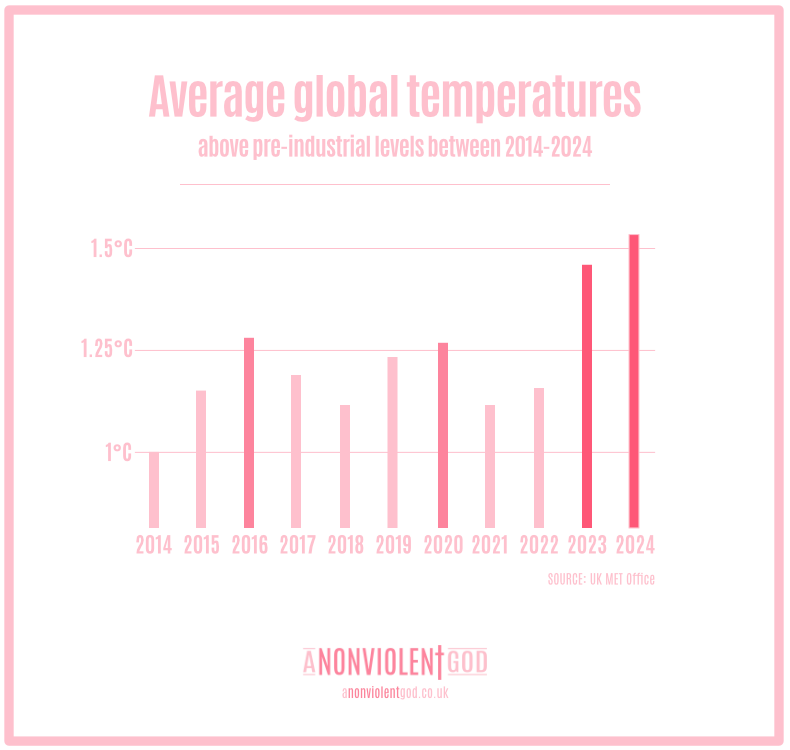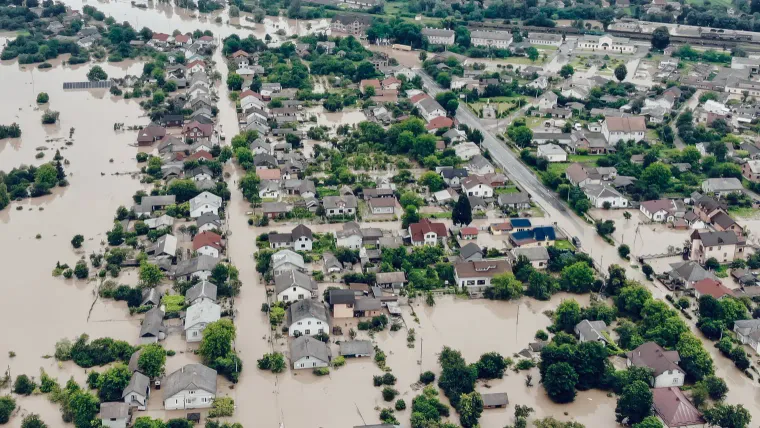We often refer to the climate changes we’re seeing as global warming because it explains the basic shift that’s occurring. Human activity, through the burning of fossil fuels, is adding greenhouse gases into our shared sky and increasing the amount of warmth our planet's atmosphere can retain.
Before the Industrial Revolution, changes to greenhouse gas levels only occurred naturally. Since we began burning fossil fuels for energy 250 years ago, we changed that. By 2024, we'd added an extra 144ppm of carbon dioxide into our atmosphere.
In 2010, the average global temperature slipped above 1°C warmer than the pre-industrial level for the first time. The temperature then dropped below this threshold for the next three years, but since 2014 it’s been over 1°C warmer every year. [Source: Met Office]
Nine years later, we began flirting with a 1.5°C rise.
The average global temperature during 2023 was 1.46°C above the pre-industrial level. [Source: Met Office] This was an astonishing 0.18°C higher than the previous warmest year of 2016 and the largest single year temperature increase ever recorded.
The year after, we exceeded 1.5°C above the pre-industrial level for the first time. During 2024, the average global temperature was 1.53°C. [Source: Met Office]

However, to most of us, an increase of one-point-something celsius sounds trivial. As does 144ppm of carbon dioxide. We do not realise how such a small rise in global temperature affects all aspects of our climate and ecosystem.
Below, we take a brief tour of the alarming cascade of consequences we're already experiencing because of this warming.


